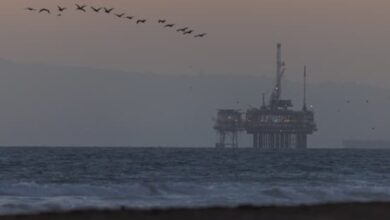Hurricane season: Tropical storm first named Alberto formed in the Gulf of Mexico


Tropical Storm Alberto formed Wednesday in the southwest Gulf of Mexico, the first named storm expected to be a powerful hurricane. busy storm season.
Alberto, which brought strong winds, heavy rains and flooding along the Texas and Mexican coasts, is expected to make landfall in northern Mexico on Thursday.
“Heavy precipitation and water, as usual, are the biggest stories in tropical storms,” said Michael Brennan, director of the National Oceanic and Atmospheric Administration’s National Hurricane Center.
Alberto is located 185 miles (about 300 km) east of Tampico, Mexico and 295 miles (about 480 km) south-southeast of Brownsville, Texas. It had peak sustained winds of 40 mph (65 km/h), according to the National Hurricane Center in Miami. A tropical storm is defined by sustained winds between 39 and 73 mph (62 and 117 km/h), and above these winds the system becomes a hurricane.
Brennan said winds could reach speeds of up to 45 mph (72 kph) to 50 mph (80 kph) before the storm makes landfall.
Brennan said 5 inches (13 centimeters) to 10 inches (25 centimeters) of rain were expected in some areas along the Texas coast, with individual rainfall totals likely to be even higher. He said some higher locations in Mexico could see up to 20 inches (50 centimeters) of rain, which could lead to landslides and flash flooding, especially in the states of Tamaulipas, Coahuila and Nuevo Leon.
At the Miramar Inn hotel in Tampico, Mexico, near where Alberto was expected to come ashore, receptionist Diana Flores said winds were gusting but not yet strong and rain had not yet begun. “There were people in the restaurant and on the beach,” Flores said early Wednesday morning.
Outer rains hit parts of Tamaulipas state in the northeastern corner of Mexico overnight.
The storm is moving west at 9 mph (15 km/h). Tropical storm warnings are in effect from the Texas coast at the San Luis Pass south to the mouth of the Rio Grande and from the northeastern coast of Mexico south of the mouth of the Rio Grande to Tecolutla.
“The storm is expected to weaken rapidly as the center moves inland and Alberto is likely to dissipate over Mexico” on Thursday, the center said.
The main danger for coastal south Texas is flooding from too much rain, the National Weather Service said. On Wednesday, the NWS said there was a “high possibility” of flash flooding in coastal south Texas. Tornadoes or waterspouts are possible.
NOAA predicts the hurricane season that begins June 1 and runs through November 30 will likely be much higher than average, with about 17 to 25 named storms. Up to 13 storms and 4 major storms are forecast.
An average Atlantic hurricane season produces 14 named storms, including seven hurricanes and three major hurricanes.
The first named system in the Atlantic averages June 20, Brennan said, so Alberto is “almost on schedule.”
ONE unnamed storm Earlier in June, more than 20 inches (50 centimeters) of rain fell on parts of South Florida, leaving many motorists stranded on flooded streets and pushing water into some low-lying homes. .
Brennan said there will be dangerous rip currents caused by the storm and drivers should pay attention to road closures and turn around if they see water on the road.
“People underestimate the power of water and sometimes they don’t always take rainfall and the threats that come with it seriously, especially if you’re driving in an area and see water covering road, you won’t want to drive into it. ,” Brennan said. “You don’t know how deep the water is. Roads may be washed away. It only takes a few inches of moving water to move your vehicle.”




